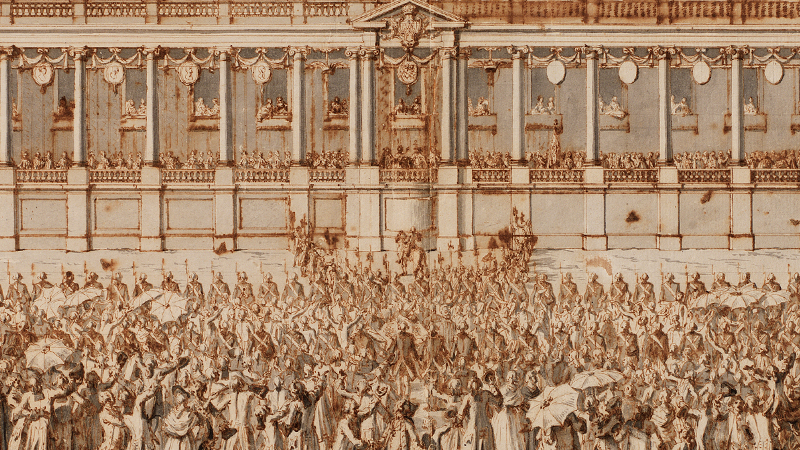Considered to be a reproductive technique, in the eighteenth century, engraving was not included in the list of artistic disciplines, so that the professional status of engravers or printmakers, as they were then called, was not acknowledged to be among those that were dedicated to the Fine Arts. The exception was reserved for those artists who, in parallel to their engraving work, also dedicated themselves to Painting, Sculpture or Drawing, which were considered to be disciplines of invention. This was, in fact, the case with the most important Portuguese engraver of the second half of the eighteenth century, Joaquim Carneiro da Silva (1727-1818), who was also an enormously talented drawer.
Born in Porto, Carneiro da Silva was only 12 years old when he went to Brazil, where he began his artistic training, continuing thereafter in Italy (Rome and Florence), while also spending some time in Paris. On returning to Portugal in around 1762, he settled in Lisbon, where he was to enjoy a lengthy career, both as an engraver and master at the Aula de Gravura da Imprensa Régia (Royal School of Printmaking), and as a teacher of Drawing, firstly at the Colégio dos Nobres (College of Nobles) and later at the Aula Régia de Desenho (Royal School of Drawing). By simultaneously presenting these two facets of his work, this exhibition enables us to revisit some of the pieces that he produced in both of these two fields – drawing and engraving.
CURATOR
Alexandra Gomes Markl
Exhibition booklet

CURATOR
Alexandra Gomes Markl
Exhibition booklet

